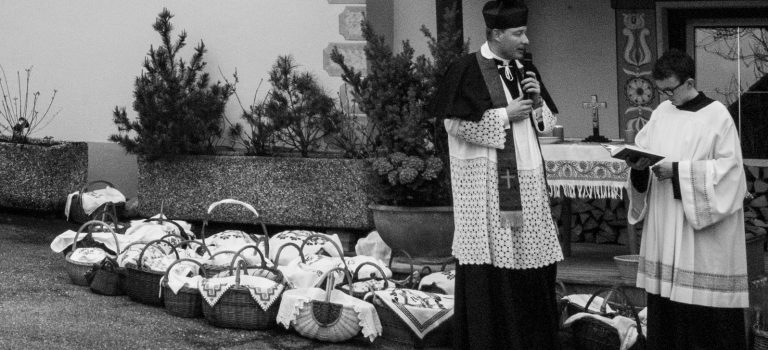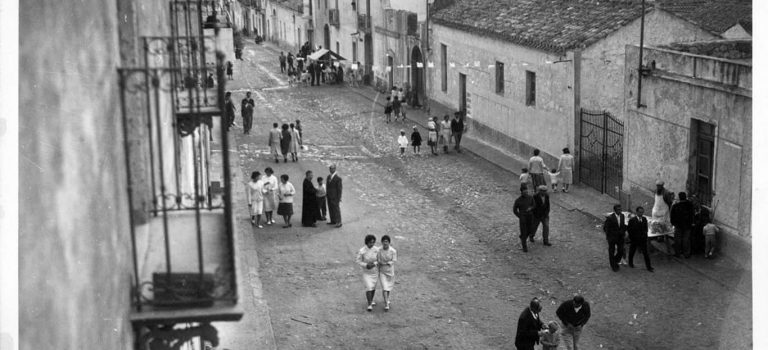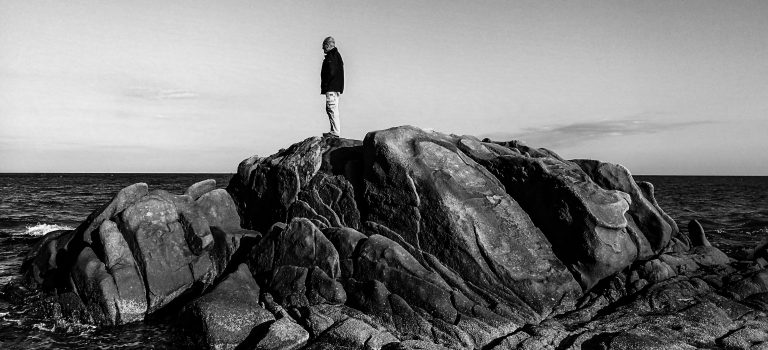Having left Sardinia for Austria we went to see an ancient ritual in Austria: The consecration of ham, eggs and bread. Saturday before Eastern we walked through a beautiful landscape and were told that near a small Hotel, that would open only in summer, at half past three there will be a rally of people waiting for the local priest to consecrate their food. And in fact, at three fifteen there was still no one but us, but at three thirty there have been around 70 people with approximately 20 baskets.
It is an old tradition to prepare the “eastern ham” at home and to put it together with eggs, bred and salt into a basket, cover it with a nicely embroidered napkin and get the priests’ blessing before eating it the same or next day. We had the impression that this yearly ritual was also a nice occasion to meet neighbors that you might not have seen for a while, doing something exciting for the children and feeling to be part of a local and yet broader community.
The priest’s headdress and outfit seemed to be very traditional. In contrast was the priest’s equipment: he came in a rented car with Marilyn Monroe, James Dean and other celebrities printed on both sides and brought a microphone and loudspeaker which were quickly set up. The few words he spent where first traditional, praying, blessing the food and thanking the women for having cooked it and embroidered the napkins but then linked to daily politics in Austria and the discussion about crosses in public places. He called on his community to engage for the cross, the symbol that since 1800 years unifies and gives identification to Austria and his inhabitants, he said. The entire ceremony was not taking more than 15 minutes, then he rushed away to repeat it in the next small village.
We instead were invited to taste the consecrated ham and eggs and bred afterwards and it was delicious!



